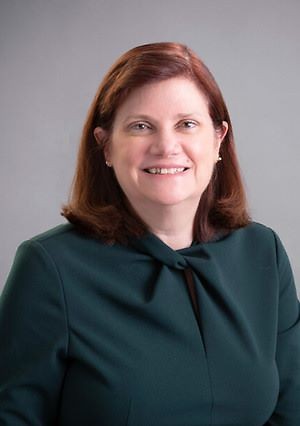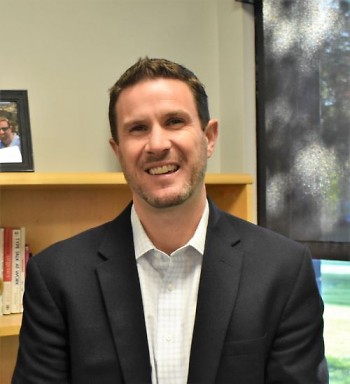Local school districts are facing a more “normal” financial outlook as they head into the 2024-25 school year due to the end of COVID relief dollars that padded district coffers over the past four years.
“Things are certainly going to get back to normal. The last three to four years have been incredibly abnormal,” said Kevin Philipps, Kent ISD assistant superintendent of administrative services.
Unfortunately, however, the return to normalcy means tighter budgets, say education leaders, who faced that reality when approving 2024-25 financial plans last month. They are reducing expenditures, eliminating some positions and programs and spending down fund balances built up in recent years. They are also looking ahead to the possible impacts of inflation and declining enrollment on fiscal solvency.
An influx of funding over the past few years came from a total of $264.15 million in Elementary and Secondary School Emergency Relief Funds spread across Kent County’s 20 school districts in three allotments as part of the 2021 Coronavirus Response and Relief Supplemental Appropriations Act. On top of that, districts have received much larger than typical state per-pupil foundation allowance increases and extra funds known as “categoricals,” which are earmarked for specific purposes, Philipps said.
“The combination of the two (state and federal dollars) infused as much money as I’ve ever seen in my career, for sure,” Philipps said.
Now, more than four years after the pandemic began, districts are approaching the final deadline to spend ESSER funds. Deadlines to spend ESSER I, II, and III allotments were staggered, with Sept. 30, 2024, the deadline for ESSER III, the largest allotment.
Difficult Decisions Expected
Grand Rapids Public Schools received more than $100 million in ESSER funds, and the vast majority of those dollars have been spent before their Sept. 30 expiration, said Rhonda Kribs, the district’s chief financial officer.
Kribs said the cash boost allowed the district to buy cleaning supplies and other essentials, hire tutors and mental health therapists, upgrade technology, give stipends to employees, make facility improvements including library renovations and furniture replacements, bolster its summer school program and build up a fund balance that had previously lagged.
As the dollars run out and the district faces an operating deficit for the coming school year, staying in good financial standing will require some work.
“We’re looking at how we’re spending our money,” Kribs said. “There will be hard decisions in our future again. Areas where we may have added to get through the pandemic, we may be needing to make reductions.”
In its 2024-25 budget, the district estimates around $260 million in revenues and $271 million in expenses, an operating deficit of $11 million. Budgeted operating deficits are not unusual for GRPS, Kribs said, but they’re also not normally this large.
The expiration of ESSER funds is one of many compounding factors taking a toll on the district’s finances, along with inflation and declining enrollment, Kribs said.
The district is expecting a 12% fund balance in the coming school year. That’s down from 19% in 2023-24, but up significantly from the state minimum 5% mark, where GRPS often found itself prior to the pandemic, noted Kribs.
“One of our goals going into this influx of a large amount of dollars was to be in a better place when we came out of it than when we went into it,” she said.
One key area that will be affected is summer school, which has used about $2 million in ESSER dollars annually. The program was previously funded using Title I dollars and will revert back to that once the aid runs out.
Title I isn’t robust enough to support the program the way ESSER has, so GRPS leaders will have to reassess what summer school looks like next year.
Kribs said some supplemental resources may also have to be discontinued; before making any decisions, the district’s curriculum team will work with teachers to identify which services have been used and which ones have been working.
Kribs said there are no plans to tighten belts with staffing cuts, but, she said, “It’s going to be a fine line to walk for the next several years.”
Closing down several underused buildings in the coming years as part of the “Reimagine GRPS With Us!” plan and the November 2023 bond will alleviate financial hardship in the long term, but it will take time for the district to reap those benefits.
“It’s a kind of expense avoidance,” Kribs said. “The hope is that, down the line, the results of the bond work will help right-size the district.”
Asked if GRPS managed to meet its goal of being in better shape after ESSER than it was before, Kribs did not hesitate.
“Yes,” she said. “Having new libraries, new furniture, updated classroom technology — all of those things contribute to us being in a better place than we were, or would have been able to be in, if we didn’t have those COVID funds.”
The Outlook Ahead
The state increased the per-pupil foundation allowance $458 to $9,608 for 2023-24, which followed a $450 increase for 2022-23. The state also allocated hundreds of millions for other district needs including school safety and mental health, special education and offsetting transportation costs.
The state’s $23 billion education budget approved June 27 does not include a per-pupil funding increase for 2024-25, but instead allocates $598 million to offset district payments to the Michigan Public Schools Employee Retirement System. The payments are equivalent to a 4% — or $400 per pupil — increase, according to information from the Governor’s Office.
In years ahead, continued funding will be determined by a variety of factors related to the economy, said Kent ISD’s Philipps.
“It’s been a long time since we’ve been in a true recession. At some point that’s going to happen. … At that point, can the state continue to afford the mental health and school safety funding, transportation funding and other things added to the School Aid Fund that have made districts a lot healthier financially?”
Whether districts can maintain staffing numbers is also a question moving forward.
“We are coming off this very inflationary economy which drove up private market wages,” Philipps said. “As districts have been going to the negotiating table, they’ve given bigger raises than in the past. What was a competitive salary five years ago, isn’t that same salary now. If funding slows down to a more moderate crawl, can those positions be afforded going forward?”
The Rapidian, a program of the 501(c)3 nonprofit Community Media Center, relies on the community’s support to help cover the cost of training reporters and publishing content.
We need your help.
If each of our readers and content creators who values this community platform help support its creation and maintenance, The Rapidian can continue to educate and facilitate a conversation around issues for years to come.
Please support The Rapidian and make a contribution today.


